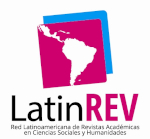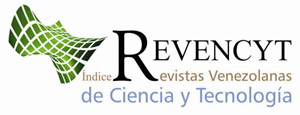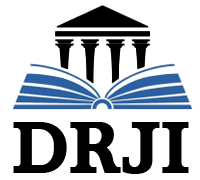El sector energético mexicano y su futuro con base en energías renovables
Palabras clave:
entorno virtual de aprendizaje, competencias tecnológicas, semilleros de investigaciónResumen
En los años 2015-2018, justo después de la promulgación de la reforma energética 2013-2014, la situación del sector energético de México empeoró. La mayoría de los problemas fueron el producto de la acumulación de decisiones erróneas vinculadas a la política energética, que surgieron debido a la reversión de un boom del mercado internacional del petróleo de larga duración, no previsto por las autoridades mexicanas. Aunque México tiene un alto potencial de desarrollo de ER (Energías Renovables), solo se ha utilizado un bajo porcentaje de esta energía (es decir, 1.7% y 2.3% en energía eólica y geotérmica); por lo tanto, existen enormes oportunidades de inversión para mejorar su uso.
México ocupa el cuarto lugar en generación de energía geotérmica en todo el mundo (958 MW). Aunque la generación de energía actual a partir de tecnologías solares es baja, tiene un alto potencial porque se encuentra entre los cinco países más llamativos del planeta para invertir en esta fuente renovable. Se espera que a mediados de la década de 2020, a pesar del crecimiento de la población, el país consuma sustancialmente menos gasolina, diésel y otros combustibles, que en la actualidad. Para ello, el gobierno y las compañías petroleras deben conciliar acuerdos en aras de adherirse al acelerado proceso de sustitución de energía iniciado a nivel internacional, con un ritmo muy rápido para la exploración y explotación de petróleo y gas en el territorio mexicano, a partir del año 2025; apresurando el desarrollo de fuentes de energía que no sean fósiles.
Descargas
Referencias
Alatorre, F. C. (2009). Renewable energies for sustainable development in México. SENER y German Technical Cooperation, México.
Ambec, S.; Cohen, M.A.; Elgie, S. & Lanoie, P. (2013). The Porter hypothesis at 20: Can environmental regulation enhance innovation and competitiveness?. Review Environnmental Economics. Policy, 7(1), 2–22.
AMDEE (2010). Wind energy status in Mexico. http://amdee.org/Recursos/Wind_ Energy_Status_in_Mexico.
Asociación Geotérmica Mexicana (2013). “Geothermal Resources”. https://geotermia.org.mx/geotermia/?page_id=688
Burchardt, J.; Gerbert, P.; Schönberger, S.; Herhold, P.;Brognaux, C. & Päivärinta, J. (27 de septiembre de 2018). The Economic Case for Combating Climate Change.https://www.bcg.com/publications/2018/economic-case-combating-climate-change
Cámara de Diputados del H. Congreso de la Unión (6 de junio2012). Ley General de Cambio Climático. Diario Oficial de la Federación. https://www.diputados.gob.mx/LeyesBiblio/pdf/LGCC.pdf
Climate Action Tracker (2019). Proyecciones de políticas actuales. https://climateactiontracker.org/countries/mexico/policies-action/
Comisión Económica para América Latina y el Caribe [CEPAL] (Marzo de 2008). Anuario Estadístico de América Latina y el Caribe 2007. https://repositorio.cepal.org/handle/11362/922
Confederación de Cámaras Industriales de los Estados Unidos Mexicanos [CONCAMIN] (2012). Private sector perspective in reference to energy management. https://www.concamin.org.mx/nosotros/quienes-somos
CRE (2013). Reports of the electricity sector. https://www.cre.gob.mx/documento/3710.pdf
Demirbas A. (2008). Biofuels sources, biofuel policy, biofuel economy and global biofuel projections. Energy Conversion Management, 49(08), 2106-2116. https://doi.org/10.1016/j.enconman.2008.02.020
Diario Oficial de la Federación [DOF] (24 de diciembre de 2015). Decreto por el que se expide la Ley de Transición Energética. http://www.dof.gob.mx/nota_detalle.php?codigo=5421295&fecha=24/12/2015
Diario Oficial de la Federación [DOF] (01 de octubre de 2019). ACUERDO por el que se establecen las bases preliminares del Programa de Prueba del Sistema de Comercio de Emisiones. https://www.dof.gob.mx/nota_detalle.php?codigo=5573934&fecha=01/10/2019#gsc.tab=0
The European Photovoltaic Industry Association (EPIA) (2010). Unlocking the sunbelt potential of photovoltaics. Unlocking the sunbelt potential of photovoltaics. (Second edition). The European Photovoltaic Industry Association. https://dokumen.tips/documents/unlocking-the-sunbelt-potential-of-photovoltaics.html?page=1
Euromonitor International (2013). How Oil Reforms Could Trigger Mexico’s Biggest Economic Boom in A Century; London, UK.
Euromonitor International (2015a). Unlocking the Energy Sector Could Transform the Mexican Economy; London, UK.
Euromonitor International (2015b). Emerging Focus: Emerging Market Economies Face Growing Environmental Problems; London, UK.
European Comission (2019). EDGAR’s Triple Contribution at COP22. https://edgar.jrc.ec.europa.eu/
Forrester, J. (1995). The beginning of system dynamics. McKinsey Quarterly. 1, 4–17.
GARPA (2008). Food and Fisheries Information Service 2008.
Gobierno de México (2014). Programa Especial sobre Cambio Climático 2014-2018. Secretaría de Turismo. https://www.gob.mx/semarnat/documentos/programa-especial-de-cambio-climatico-2014-2018
Gutiérrez, L. (2012). Update of the geothermal electric potential in Mexic. GRC Transactions, 36, 671-678. https://publications.mygeoenergynow.org/grc/1030299.pdf
Instituto de Investigaciones Eléctricas [IIE] (2010). Geographic information system for renewable energies. http://sag01.iie.org.mx/evaluarer/welcomeSIGER.html
International Renewable Energy Agency [IRENA] (2015 Renewable Energy Capacity Statistics 2015. https://www.irena.org/publications/2015/Jun/Renewable-Energy-Capacity-Statistics-2015
Islas, J.; Manzini, F. & Martínez, M. (2004). CO2 Mitigation Costs for New Renewable Energy Capacity in the Mexican Electricity Sector using Renewable Energies. Solar Energy, 76, (4), 499-507. https://doi.org/10.1016/j.solener.2003.06.001
Jaffe, A. B., & Palmer, K. (1997). Environmental Regulation and Innovation: A Panel Data Study. The Review of Economics and Statistics, 79(4), 610–619. http://www.jstor.org/stable/2951413
Jaffe, A.B., Newell, R.G. & Stavins, R.N. Environmental Policy and Technological Change. Environ Resource Econ, 22 (1-2), 41–70. https://doi.org/10.1023/A:1015519401088
Lajous, A. (2014). Mexican Energy Reform; Center on Global Energy Policy, Columbia University: New York, NY, USA. https://energypolicy.columbia.edu/sites/default/files/CGEP_Adrian%20Lajous_Mexican%20Energy%20Reform_Final.pdf
Levin, S.; Xepapadeas, T.; Crépin, A-S.; Norberg, J.; De Zeeuw, A.; Folke, C.; Hughes, T.; Arrow, K.; Barrett, S.; Daily, G.; Ehrlich, P., Kautsky, N., Mäler, K-G., Polasky, S., Troell, M., Vincent, J. R., & Walker, B. (2013). “Social-ecological systems as complex adaptive systems: Modeling and policy implications”. Environment and Development Economics, 18(2), 111–132. https://www.jstor.org/stable/26379167
National Ecology Institute [INECC] (2013). Green House Gases National Inventory 1990-2010. First Edition (in Spanish). Mexico City, Mexico.
Petróleos Mexicanos [PEMEX] (2017). Nuestro negocio. https://www.pemex.com/nuestro-negocio/Paginas/default.aspx
Petróleos Mexicanos [PEMEX] (2018). Indicadores Petroleros. https://www.pemex.com/Paginas/buscador.aspx?q=indicadores%20petroleros%202018
Pindyck, R. S. (2013). Climate Change Policy: What Do the Models Tell Us?. Journal of Economic Literature, 51 (3), 860-72. DOI: 10.1257/jel.51.3.860
PROMARNAT (2013). Plan de Desarrollo: Programa Sectorial de Medio Ambiente y Recursos Naturales Gobierno de la República Mexicana; SEMARNAT: Ciudad de México, México.
PROMEXICO (2012a). Renewable Energy, Business Intelligence Unit.
PROMEXICO (2012b). Self-supply in Renewable Power. Mexico.
REMBIO (2011). Bioenergy in Mexico, current situation and outlook. https://rembio.org.mx/wp-content/uploads/2014/12/CT4.pdf
Santiago, J. y Rodríguez, S. (05 de junio 2017). Se formalizará mercado de bonos de carbono. El Economista. https://www.eleconomista.com.mx/mercados/Se-formalizara-mercado-de-bonos-de-carbono-20170605-0099.html
Secretaría de Energía [SENER] (2002). Renewable Energies in Mexico 2002.Secretaría de Energía [SENER] (2003). Electricity Sector Prospective 2003–2012. https://www.gob.mx/cms/uploads/attachment/file/62949/Prospectiva_del_Sector_El_ctrico_2013-2027.pdf
Secretaría de Energía [SENER] (2011). National Energy Balance 2011. https://biblioteca.semarnat.gob.mx/janium/Documentos/Ciga/Libros2013/CD001720.pdf
Secretaría de Energía [SENER] (2016). Información de finanzas públicas y deuda pública enero-noviembre 2016. http://finanzaspublicas.hacienda.gob.mx/work/models/Finanzas_Publicas/docs/congr eso/fp/2016/FP_201 611.pdf
Secretaría de Energía [SENER] (2017). Prospectiva del Sector Energético 2016-2030. https://www.gob.mx/cms/uploads/attachment/file/177622/Prospectiva_de_Energ_as_Renovables_2016-2030.pdf
Secretaría de Energía [SENER] (2018). Sistema de Información Energética. https://sie.energia.gob.mx/
Secretary of Energy (2015). Development Program for the National Electricity System 2015-2029 (PRODESEN), (in Spanish).http://base.energia.gob.mx/prodesen/PRODESEN2016/PRODESEN-2016-2030.pdf
Secretaría de Hacienda y Crédito Público [SHCP] (2017). Criterios Generales de Política Económica https://www.ppef.hacienda.gob.mx/work/models/PPEF2017/paquete/politica_hacendaria/CGPE_2017.pdf
Secretaría de Hacienda y Crédito Público [SHCP] (2018). Estadísticas Oportunas de Finanzas Públicas. https://finanzaspublicas.hacienda.gob.mx/es/Finanzas_Publicas/Estadisticas_Oportunas_de_Finanzas_Publicas
Secretaría del Medio Ambiente y Recursos Naturales [SEMARNAT] (2013). Estrategia Nacional de Producción y Consumo Sustentable. Gobierno de México. Ciudad de México, México.
Secretaría del Medio Ambiente y Recursos Naturales [SEMARNAT] (2014). Carbón tax in Mexico. https://www.thepmr.org/system/files/documents/Carbon Tax in Mexico.pdf.
SEMARNAT (2013). Programa Sectorial de Medio Ambiente y Recursos Naturales (PROMARNAT) 2013 - 2018. Resumen Ejecutivo. México. http://igh.com.mx/programa_hidrico_chiapas/documentos/Informacion/Programa%20Sectorial%20de%20Recursos%20Naturales%20y%20Medio%20Ambiente%20(2013-2018).pdf
Sheinbaum, C.; Ruiz, B.; y Ozawa, L. (2011). “Energy consumption and related CO2 emissions in five Latin American countries: changes from 1990 to 2006 and perspectives”. Energy, 36 (6), 3629–3638. https://doi.org/10.1016/j.energy.2010.07.023
Siew, R.Y. (2015). A Review of Corporate Sustainability Reporting Tools (SRTs). Journal of Environmental Management, 164, 180–195. https://doi.org/10.1016/j.jenvman.2015.09.010
Sterman, J. D. (2006). Learning from evidence in a complex World. American journal of public health, 96 (3), 505–514. https://doi.org/10.2105/AJPH.2005.066043
Sullivan, R. & Sullivan, J. (2005). Environmental Management Systems and Their Influence on Corporate Responses to Climate Change. En K. Begg, F. Woerd y D. Levy (Eds),
The Business of Climate Change. Corporate Responses to Kyoto. (1.ª ed.). Routledge. https://doi.org/10.4324/9781351281683
United Nations Framework Conventión on Climate Change [UNFCCC] (2015). Mexico Intended Nationally Determined Contributions. http://www4.unfccc.int/ndcregistry/PublishedDocuments/Mexico First/MEXICO INDC 03.30.2015.pdf
US Energy Information Administration [USEIA] (2017). Short Term Energy Outlook (STEO). https://www.eia.gov/outlooks/steo/archives/jan17.pdf
Vidal, J.J.; Østergaard, P. & Sheinbaum-Pardo, C. (2015). Optimal Energy Mix for transitioning from Fossil Fuels to Renewable Energy Sources – The Case of the Mexican Electricity System”. Applied Energy, 150, 80-96. https://doi.org/10.1016/j.apenergy.2015.03.133
Wionczek, M.; Guzmán, O. y Gutiérrez, R. (1988). Energy Policy in Mexico. Problems and Prospects for the Future, Boulder and London: Westview Press.
World Energy Council (2017). Changing Dynamics—Using Distributed Energy Resources to Meet the Trilemma Challenge. World Energy Trilemma. https://www.worldenergy.org/publications/entry/world-energy-trilemma-2017-changing-dynamics-a-using-distributed-energy-resources-to-meet-the-trilemma-challenge
Publicado
Cómo citar
Número
Sección
Licencia

Esta obra está bajo una licencia internacional Creative Commons Atribución-NoComercial-CompartirIgual 4.0.





















